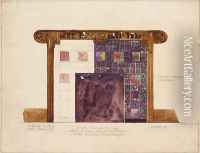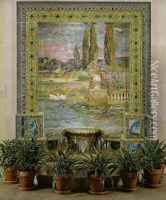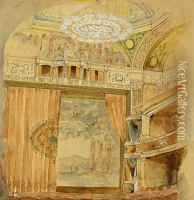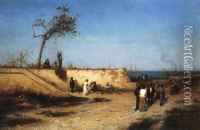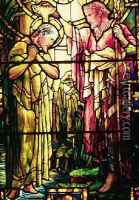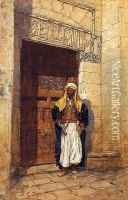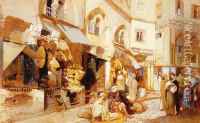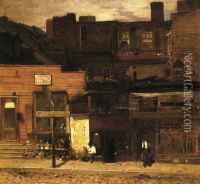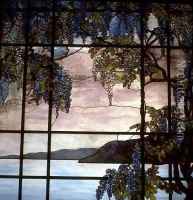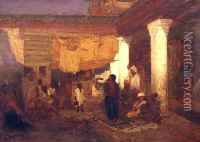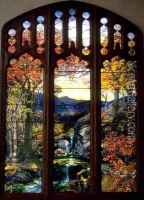Louis Comfort Tiffany Paintings
Louis Comfort Tiffany was an American artist and designer who is best known for his work in stained glass and is the American artist most associated with the Art Nouveau and Aesthetic movements. He was born in New York City on February 18, 1848, the son of Charles Lewis Tiffany, founder of Tiffany & Co., the renowned jewelry and silver firm.
Louis Tiffany began his career as a painter, studying under George Inness and Samuel Colman in New York, and Léon Bailly in Paris. However, his interest soon shifted to the decorative arts and interior design. In the 1870s, he started working with glass and in 1885, he founded his own glassmaking firm, Tiffany Studios. He developed a type of glass known as Favrile, which had an iridescent, opalescent quality and was used in windows, lamps, and decorative objects. His work was characterized by his innovative use of color, texture, and opalescent glass to create a stunning, painterly effect.
Tiffany's contributions to design extended beyond glasswork. He worked on a variety of interior design projects, including the homes of wealthy patrons, the White House, and the Mark Twain House. His firm also produced a range of decorative objects, from lamps and vases to jewelry and textiles.
Perhaps Tiffany's most famous work is his stained glass windows, which can be found in many churches, museums, and private collections around the world. His designs often featured natural motifs and were known for their exceptional use of color and light.
Despite his success, the popularity of Tiffany's work declined in the 1920s with the rise of modernism and changes in fashion. Tiffany Studios went bankrupt in 1932, and Louis Comfort Tiffany died on January 17, 1933, in New York City. However, his work experienced a resurgence in popularity in the late 20th century and continues to be celebrated for its beauty and craftsmanship. Tiffany's legacy lives on through his artistic creations, which remain influential and are studied and admired to this day.

